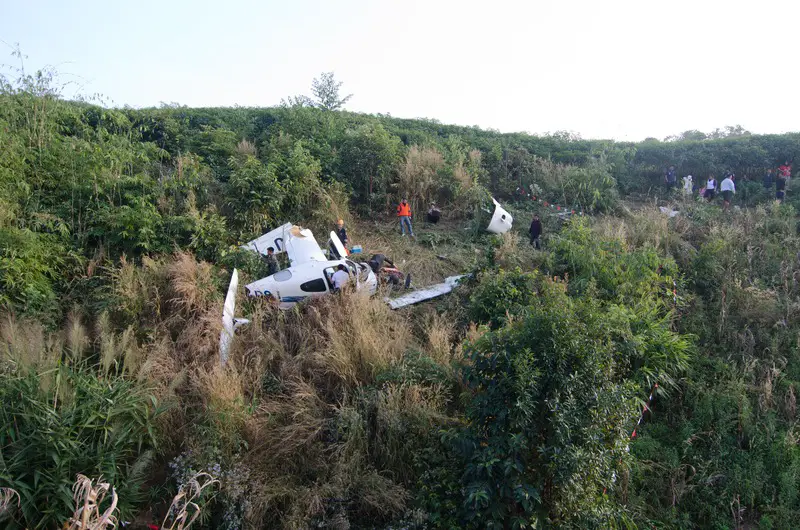Three individuals lost their lives when a twin-engine Hawker 800 aircraft descended 12,000 feet in less than a minute before crashing into a wooded area near Lansing, Michigan, on Thursday, October 16, 2025, around 5 p.m., according to officials.
The jet crashed near the intersection of Clark Road and Peacock Road in Bath Charter Township, east of Lansing, after departing from Battle Creek Executive Airport at Kellogg Field.
The aircraft was on a test flight following recent repairs at Battle Creek Executive Airport, approximately 50 miles from the crash site. Audio recordings documented the pilot’s final moments as he radioed for assistance. “Stall recovery, stall recovery!” the pilot exclaimed as the plane descended, according to recordings obtained by LiveATC.net.
An air traffic controller sought information by asking the pilot about his altitude, but received no response. The controller then asked other aircraft in the area if they could see the plane or notice any smoke or other indicators after losing contact.
Another pilot in the vicinity responded shortly after, confirming the worst fears. The pilot reported seeing smoke and noted a road just south of where the smoke was visible.
No one on board survived the crash. Officials have released the presumptive identities of the victims as two pilots from Mexico City and a mechanic from Veracruz, pending DNA confirmation.
The Hawker 800, registered in Mexico, had been at Battle Creek Executive Airport for maintenance before the fatal flight. Phil Kroll, the airport’s aviation director, confirmed the plane had landed there for repairs but declined to specify the nature of the work.
“They were just testing out some systems and that’s when the problem occurred,” said Kroll.
The plane exploded upon impact, producing a large plume of smoke visible from nearby roads and highways. The intense fire and impact resulted in debris scattered throughout the wooded crash site.
Local authorities and the Federal Aviation Administration initiated investigations into the crash. However, the FAA’s response was limited due to a lack of funding resulting from the ongoing government shutdown affecting federal operations at the time.
The cause of the crash is still under investigation. Experts will consider factors such as the nature of the recent repairs, the systems tested during the flight, weather conditions at the time, and the aircraft’s maintenance history.
The pilot’s distress calls about stall and recovery suggest possible aerodynamic issues that hindered normal flight operations. A stall occurs when an aircraft loses lift due to exceeding a critical angle of attack, with the rapid descent rate indicating a severe loss of control.
The Hawker 800, a mid-size corporate jet manufactured by British Aerospace, can carry eight to nine passengers along with crew members. The twin-engine aircraft has been in production since the late 1980s and is used for business aviation and charter operations.
Investigators will likely examine the aircraft’s black boxes, if they survived the fire, along with air traffic control recordings, witness statements, and wreckage analysis to determine the cause of the failure during the test flight.
The plane’s registration in Mexico and maintenance in Michigan may add complexity to the investigation, potentially involving international aviation authorities alongside US federal agencies.
The rapid descent left the pilot with little time to attempt emergency procedures or locate a suitable landing site. The wooded terrain provided limited options, even if the pilot had some degree of control.
The investigation into the crash is expected to take months as authorities piece together the sequence of events.











